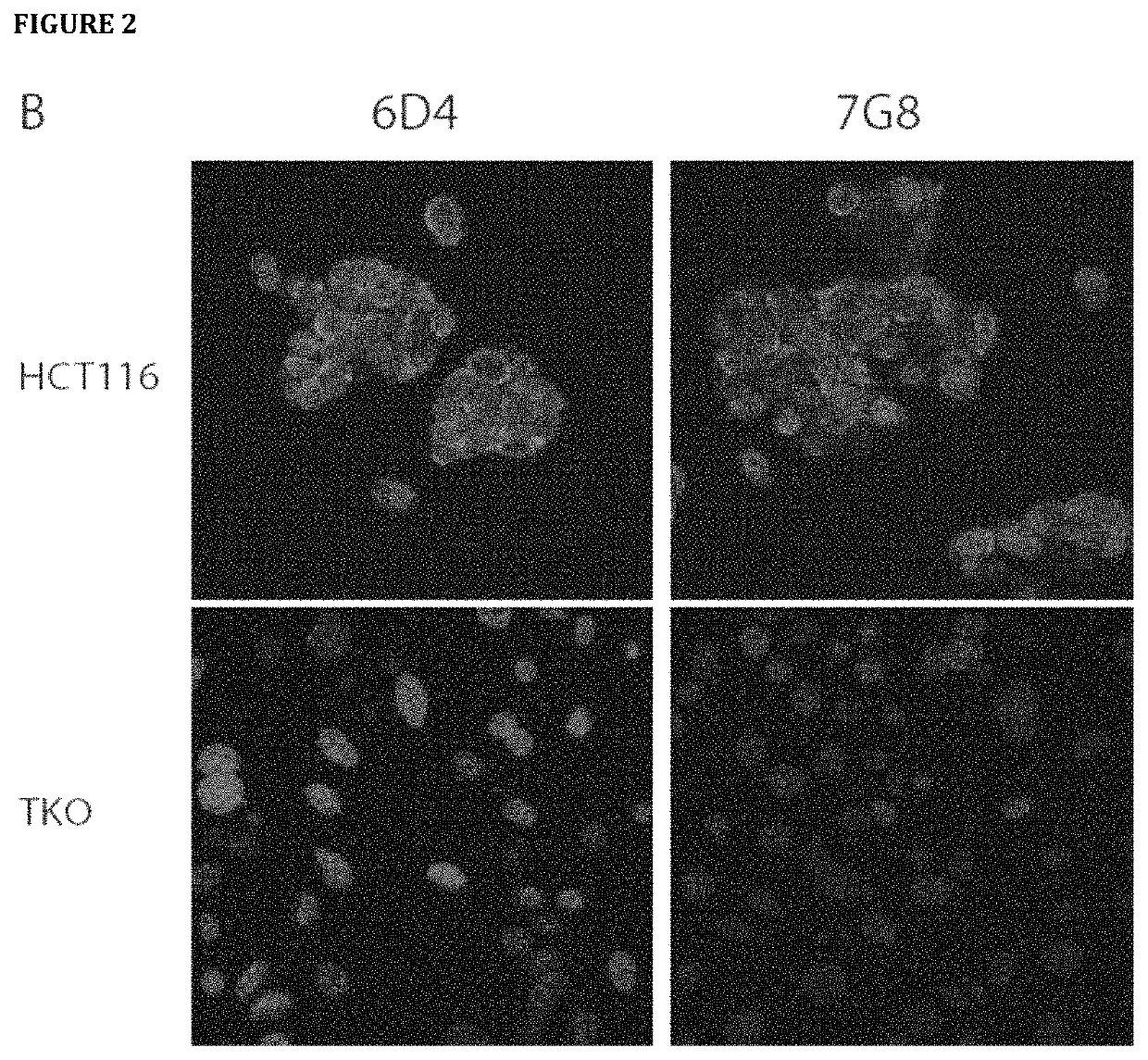Macrophage stimulating protein receptor (or RON—recepteur d'Origine Nantais) antibodies and uses thereof
a technology of ron and ron, which is applied in the field of macrophage stimulating protein receptor (or ron — recepteur d'origine nantais) antibodies, can solve the problems of insufficient treatment options, limited success of approaches, and presently unmet medical needs for alternative cancers
- Summary
- Abstract
- Description
- Claims
- Application Information
AI Technical Summary
Benefits of technology
Problems solved by technology
Method used
Image
Examples
example 1
nt RON Antigen Design, Expression and Purification
[0725]The translated sequence for RON was analysed for antigenicity with Jameson-Wolf algorithm in Lasergene Protean v8.1 program (DNASTAR Inc., Madison, Wis.) to predict the antigenic index of RON. This algorithm integrates several parameters to calculate the antigenicity of the sequence based on the characteristics of its primary amino acid chain: hydrophilicity (Hopp-Woods), surface probability (Emini), flexibility of the protein backbone (Karplus-Schulz), and secondary structure prediction (Chou-Fasman and Garnier) (Jameson & Wolf, 1988).
[0726]The entry vector containing full length human RON cDNA in pCMV6 vector (RC212786) was obtained from Origene. Three truncated regions of RON were selected based on the most antigenic sequences in the extracellular regions and subcloned into pGEX-4T1 vector (GE Healthcare) using EcoRI and Xhol restriction sites. The recombinant plasmids were transformed into BL21 E. coli competent cells (Invi...
example 2
ion of Truncated RON into Mice
[0727]Five 8 weeks old Balb / c female mice were obtained from Biological Resource Center (Singapore) and inoculated with recombinant human protein RON immunogens. The first immunisation was performed intraperitoneally with Sigma Adjuvant System (Sigma) as adjuvant, followed by five intraperitoneal and subcutaneous injections at 3 weeks interval. One week after the fourth immunization, blood was drawn from each mouse via cheek bleed using a lancet (MEDIpoint International Inc.). Approximately 101 of blood was centrifuged for 10 min at 1600 rpm and serum was aspirated and stored at 4° C. Subsequently the antibody response was measured by enzyme-linked immunosorbent assay (ELISA) with the RON protein used for immunisation immobilized on the ELISA plate. The mouse with the highest serum antibody titer was selected as the spleen donor for fusion with myeloma cell line SP2 / 0.
[0728]Fusion of Mice Spleen with Myeloma Cells to Obtain Hybridoma Cells
[0729]The mice...
example 3
of Hybridoma Cells for RON Antibodies
[0730]ELISA
[0731]Hybridoma clones secreting mAbs targeting human RON were selected by ELISA assay with the use of 96-well Maxisorp plates (Nunc) coated separately with recombinant RON and GST. Supernatant collected from individual hybridoma wells were tested on ELISA plates. 10% fetal bovine serum (FBS) was used for blocking and antibody dilution. 1×PBS with 0.05% Tween 20 (PBST) was used for washes. After washing, IgGs were detected using 1:5000 goat anti-mouse IgG conjugated to HRP (Biorad) in PBST with 10% FBS. After washing, plates were developed with 1×TMB ELISA substrate solution (Sigma). Absorbance was measured at 650 nm with EnVision Plate Reader (Perkin Elmer).
PUM
 Login to View More
Login to View More Abstract
Description
Claims
Application Information
 Login to View More
Login to View More - R&D
- Intellectual Property
- Life Sciences
- Materials
- Tech Scout
- Unparalleled Data Quality
- Higher Quality Content
- 60% Fewer Hallucinations
Browse by: Latest US Patents, China's latest patents, Technical Efficacy Thesaurus, Application Domain, Technology Topic, Popular Technical Reports.
© 2025 PatSnap. All rights reserved.Legal|Privacy policy|Modern Slavery Act Transparency Statement|Sitemap|About US| Contact US: help@patsnap.com



